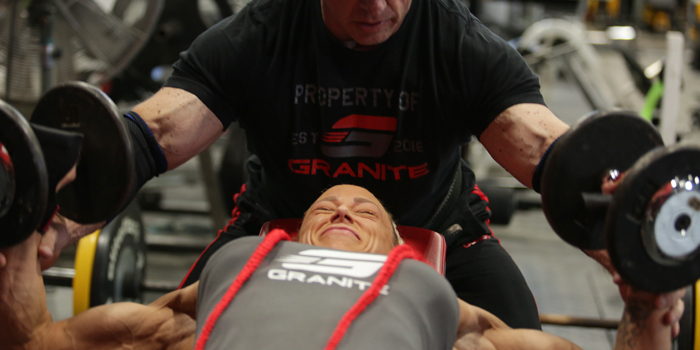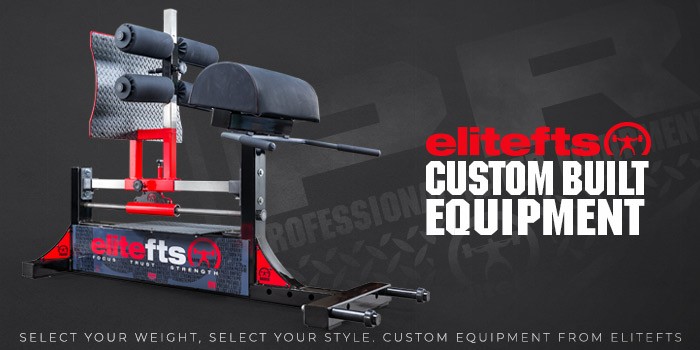
I wrote a two-part series of articles, Project Return to the Press, in which I outlined my process for returning to the barbell after sustaining a soft tissue injury. In my effort to continually bridge the gap and make that bridge wider and stronger, I tied together a few ideas from that experience with some tried and true methods. For some reason, that damn article Matt Rhodes wrote is stuck in my brain, Conditioning Without Running (1), and the ideas from it have influenced my team, small groups, and my training. In general, the method in Matt’s article is a form of interval training where bouts of exercise are interspersed with controlled periods of rest. The beauty of interval work is the versatility of application to a wide variety of means and methods while at the same time providing application to a wide variety of athletes and non-athletes alike.
MORE: Conditioning Without Running
In Interval Training: Conditioning for Sports and General Fitness (dating back to the 70s), the authors state:
“Can one convert his present exercise program using any method (interval) of exercise? Yes, and he should…calisthenics, running, cycling, swimming, and, as a matter of fact, man should all do physical work in intervals rather than continuously. More work and less fatigue will be the reward.”
The authors contend that the rest interval (RI) disallows accumulation of fatigue and inhibitory waste products, resulting from fatigue that increases blood pressure and overloads the cardiac system. Given the RIs can spare these detrimental aspects of training, interval training can be successful for individuals in the 70-year-old age category and up (2). According to Fox and Mathews, ITP should form the basis of conditioning for every sport as the marriage of means, methods, and individual differences can prepare athletes for maximal performance (2). Even though I am not 70, nor am I a competitive athlete anymore, I seek to retain any semblance of these abilities while maintaining the ability to do them more often with the highest level of quality I can.
More specifically, my current objectives fit within the framework that interval type training offers. In a broad-spectrum view, the strength circuits serve as a conditioning means and an accountability means. The clock will not compromise for a lack of baseline effort. In other words, every time the top of that minute hits…YOU ARE UP! For myself, densifying the assistance work through strength interval circuits (maybe a new acronym for the field) fortifies my cardiovascular health without having to resort to classic roadwork or the god-awful treadmill. No offense to those that enjoy treadmills, I digress.
RELATED: Project Return to Press: No Barbell, No Problem
Another objective that fits within the scope of my program is tissue resiliency. I mentioned how I employed various isometric (ISO) and eccentric emphasis work in the Return to Press article series. For all you triphasic junkies, this next program incorporates isometrics (yielding version) as a follow-up to some of the eccentric-based work. Yielding ISOs are characteristically similar to eccentric work, which makes for a smooth transition here.
I split the arrangement of the isometric work into a short duration isometric day (SDISO) and a long duration isometric day (LDISO) within the strength circuit template. The SDISO is your classic pause work (3-5 count) at the weakest point in the range of motion followed by a repetition. For the LDISOs, I incorporated guidelines from speed coach Chris Korfist. He states the benefit of long-duration isometrics (30 seconds) for his footballers the day after a game.
According to Korfist,
Isometric strength is a foundation for all reflexive movements and can enhance explosive movement, including sprinting and jumping.
Over time, isometric strength does not create a lot of muscle soreness upon acclimation and creates a lot of blood flow when the hold is in the 30-second range. This greatly aids in recovery by moving toxins that build up from the recovery process while sleeping. His protocol is to hold lighter weights for 30 seconds, do three reps, and repeat. Take a short rest up to 45 seconds (optimizing GH release), aiming for two total minutes of ISO holds (3).
Respective of this time period and holding to the parameters of the strength circuit, I applied a wave of work accumulation beginning with a 20-second hold in week 1, a 25-second hold for week 2, and a 30-second hold for week 3. The rest intervals were essentially the remaining time to the top of the next minute. The duration of this time bracket lends itself to the development of that transitory end of the anaerobic system. It partially lies in the short duration ATP/CP zone, covers the glycolytic zone, and (given the short rest intervals) the aerobic zone gets stimulated throughout the total time of the circuit. These aspects are better explained by Dietrich Buchenholz defining brackets of work respective of time, where brackets of work that encompass longer work times help raise capacity and tolerance of work in the bracket below. Buchenholz breaks down anaerobic work into two zones with lower and upper levels anaerobic response (An-1: 9-25 sec) and anaerobic reserve (An-2: 25-40). Respective of sprint/power athletes, Dietrich defines the aerobic response zone as 40-70 seconds (4, pg. 50-53). The rules here are “greater correlation is found when training within neighboring ‘upper bound’ and ‘lower bound’ intervals (i.e., 9-25 seconds An-2 work is better for direct An-1 development, especially upper bound An-1(4.5-9.0 seconds), compared to, say, the upper bound An-2 bracket of 25-40 second working bouts).” (4, pg.52).
This explanation can give us a deeper insight into the value of assistance and accessory work and how time contributes to the performance of power and strength work. I would guess that a precise approach in marrying time periods of work with certain regimes of muscular work aimed at withstanding and absorbing forces not only builds the tolerance of the tissues but will give you that extra benefit of repeatability of work in submaximal time requirements—whether it is repeated lower rep lift attempts, short sprints, or any other activity where repeated bouts of force production are required. All of this adds to the amount of time under tension. The muscles and connective tissues that are loaded make for a trifecta of hypertrophy, strength, and conditioning.
The Setup
The LDISO strength circuit follows my main movement of the day. For upper body, I use the pushup (on dip handles), inverted row (with elitefts fat grip V handle), preacher curl (on GHR), and modified dumbbell JM Press.
***I used the Thompson Fatbells here because they are the only bell-type implement that does not wreck my shoulders and elbows. If you have a training partner, they can eye the clock for you, or you can use an app-based interval timer. Here is a three-week layout for upper and lower body.
- Week 1: 15s on/45s off
- Week 2: 20s on/40s off
- Week 3: 25s on/35s off
Upper Body
*5 sets each
A1) ISO Pushup (Held in bottom-most position)
A2) ISO Inverted Row (Held at the top)
A3) Modified JM Press (held at ¾ to the bottom)
A4) Preacher Curl (Held Midway)
Lower Body
*5 sets each
A1) Belt Split Squat-Left Leg (Held in bottom)
A2) Belt Split Squat-Right Leg (Held in bottom)
A3) Glute Ham Raise (Held at midpoint)
A4) Plank Variation
The SDISO strength circuit followed my main movement of the second lower body lift only. I opted for exercises done conventionally for the upper body as I was enjoying the landmine presses and pull-ups from the previous phase. Here is a 3-week layout for lower body.
- Week 1- 5 sets x 4 reps each, 5-sec hold
- Week 2- 5 sets x 5 reps each, 5-sec hold
- Week 3-5 sets x 6 reps each, 5-sec hold
A1) Belt Split Squat-Left Leg
A2) Belt Split Squat-Right Leg
A3) Glute Ham Raise (Held at midpoint)
References
- Rhodes, Matt. “Conditioning Without Running.” elitefts, 29 July 2019, www.elitefts.com/education/conditioning-without-running/.
- Fox, Edward L., and Donald K. Mathews. Interval Training: Conditioning for Sports and General Fitness. Saunders, 1974.
- Korfist, Chris, et al. “In-Season Training for the Football/Track Athlete.” SimpliFaster, 18 Apr. 2020, simplifaster.com/articles/training-football-track-athlete/.
- Buchenholz, Dietrich. The Best Sport Training Book Ever. Inno-Sport Publishing Group, 2003-2004.
 Pete Arroyo is the owner of Legacy Strength Systems, INC. Located in Chicago’s west suburbs, LSS provides physical preparation services to athletic-minded clientele ranging from adults to field and aquatic athletes that have excelled at the high school and collegiate echelons. LSS is the training choice for Naperville Central High Schools women’s and men’s swim teams.
Pete Arroyo is the owner of Legacy Strength Systems, INC. Located in Chicago’s west suburbs, LSS provides physical preparation services to athletic-minded clientele ranging from adults to field and aquatic athletes that have excelled at the high school and collegiate echelons. LSS is the training choice for Naperville Central High Schools women’s and men’s swim teams.









